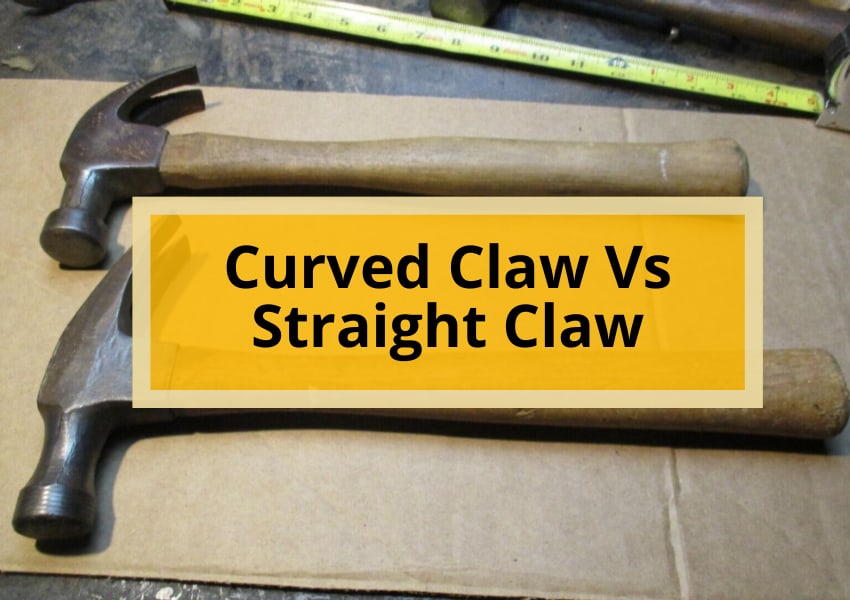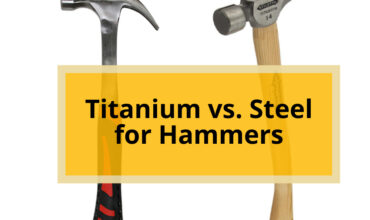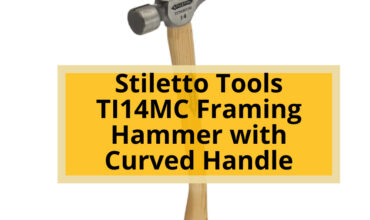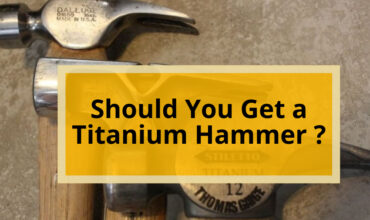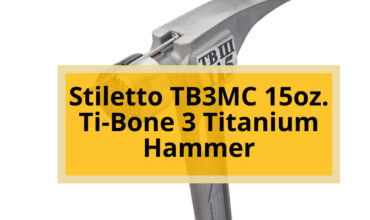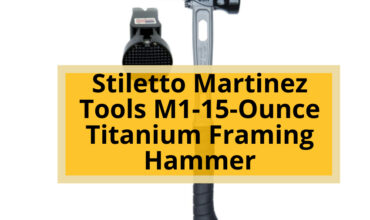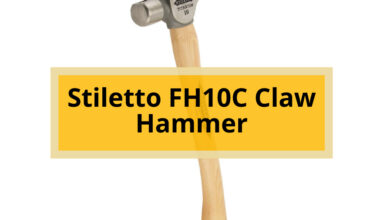In the realm of hammers, a fierce battle rages on between two contenders: the curved claw and the straight claw.
Picture, if you will, the scene of a construction site, where these formidable tools clash in a quest for dominance.
The curved claw, with its graceful arc, delicately plucks nails from their hiding places, leaving behind unblemished surfaces.
On the other side of the ring, the straight claw stands tall and sturdy, ready to tackle the most demanding of tasks. With its sharp, unyielding edge, it tears through materials with ease, providing power and leverage. Framing and demolition tremble under its might.
Although both hammers have their merits, a preference for the straight claw often prevails.
Join us as we delve into the intricacies of weight, nail pulling abilities, and suitability for different projects.
In this ultimate battle, the choice between curved claw and straight claw hammers ultimately rests on the specific requirements of the project and personal preference.

Comparison of Weight
When comparing the weight of curved-claw and straight-claw hammers, it is evident that curved-claw hammers weigh less, typically around 16 ounces, while straight-claw hammers tend to weigh 20 ounces or more. This difference in weight can significantly impact the user’s experience and performance.
The lighter weight of curved-claw hammers makes them easier to handle and maneuver, reducing fatigue during prolonged use. Additionally, the reduced weight allows for increased precision and control, particularly in delicate tasks such as finished interior work.
On the other hand, the heavier weight of straight-claw hammers provides added power and leverage, making them more suitable for demanding tasks like framing and demolition.
Ultimately, the choice between the two types of hammers depends on the specific requirements of the job at hand and the preferences of the user.
Nail Pulling Abilities
In terms of their capabilities for nail extraction, the two types of hammers showcase distinct characteristics. When it comes to pulling nails, the curved-claw hammer proves to be more advantageous in several ways:
- Precision: The curved claw allows for the delicate removal of nails with minimal damage to the board or surface, making it ideal for finished interior work.
- Minimal scarring: Unlike straight-claw hammers, curved-claw hammers do not accidentally scar the surface when removing nails, ensuring a clean and polished finish.
- Versatility: While straight-claw hammers excel in framing and demolition tasks, curved-claw hammers offer a wider range of applications, making them suitable for various projects.
- Damage prevention: The design of the curved claw reduces the risk of damaging the material being worked on or surrounding areas, providing a more reliable and precise nail-pulling experience.
Considering these factors, the curved-claw hammer emerges as a preferred choice for nail extraction, particularly in situations that require finesse and precision.
Suitability for Framing and Demolition
The suitability of the two hammer types for framing and demolition tasks is determined by their specific design features and characteristics.
Straight-claw hammers are favored for these tasks due to their ability to provide leverage and power when driving larger nails. The straight claw allows for chunking away material and even spearing the end of a joist to facilitate lifting. This makes straight-claw hammers ideal for heavy-duty construction work, such as framing and demolition.
On the other hand, curved-claw hammers, with their lighter weight and curved claws, are more suitable for finished interior work. They excel at pulling nails with minimal damage to the board and do not accidentally scar the surface.
While both hammer types have their merits, for framing and demolition tasks, the straight-claw hammer is the preferred choice.
also read : The Perfect Inverter Size For Your Tv: Powering Entertainment With Solar Energy
Power and Leverage
Power and leverage are important factors to consider when comparing the two hammer types. Straight-claw hammers are known for their superior power and leverage, making them the preferred choice for framing and demolition tasks. The straight claw provides a longer surface area, allowing for better control and force when driving bigger nails into tough materials. This increased power and leverage can be especially beneficial in applications where significant force is required, such as breaking through walls or prying apart heavy materials.
On the other hand, curved-claw hammers may not provide the same level of power and leverage as their straight-claw counterparts. While they are lighter and more maneuverable, they are generally better suited for finished interior work rather than heavy-duty tasks that require maximum force.
Ultimately, the choice between the two hammer types depends on the specific needs and preferences of the user.
Recommendations
When considering the two hammer types, it is recommended to take into account the specific tasks and requirements to make an informed choice. The choice between curved-claw and straight-claw hammers depends on the nature of the work at hand. Curved-claw hammers are generally recommended for finished interior work, as they minimize damage to the board when pulling nails and do not accidentally scar the surface. On the other hand, straight-claw hammers are preferred for framing and demolition tasks, as they provide leverage and power for driving bigger nails. To further understand the differences between the two hammer types, the following table provides a comparison:
| Hammer Type | Recommended for | Benefits |
|---|---|---|
| Curved-Claw | Finished interior work | Minimizes damage, no accidental scarring |
| Straight-Claw | Framing and demolition tasks | Provides leverage and power for driving bigger nails |
By considering the specific tasks and requirements, one can make an informed choice between curved-claw and straight-claw hammers.
Frequently Asked Questions
Are there any other factors to consider when choosing between a curved-claw and straight-claw hammer, aside from weight and nail pulling abilities?
Aside from weight and nail pulling abilities, factors to consider when choosing between a curved-claw and straight-claw hammer include the type of task (framing or finished work), leverage and power needed, and potential for surface damage or material removal.
Can a curved-claw hammer still be used for framing and demolition tasks, or is a straight-claw hammer always the better choice?
While a curved-claw hammer can be used for framing and demolition tasks, a straight-claw hammer is generally considered the better choice due to its leverage and power for driving bigger nails.
Is there a specific technique or skill required to use a curved-claw hammer effectively for pulling nails without damaging the board?
Using a curved-claw hammer effectively for pulling nails without damaging the board requires a specific technique. The user must position the claw correctly, apply even pressure, and use a rocking motion to remove the nail smoothly.
Are there any disadvantages or drawbacks to using a straight-claw hammer for finished interior work?
There are potential disadvantages to using a straight-claw hammer for finished interior work. It may accidentally scar the surface when removing nails and lack the finesse and precision offered by a curved-claw hammer.
Can a curved-claw hammer provide enough power and leverage for driving bigger nails, or is a straight-claw hammer necessary for those tasks?
A straight-claw hammer is necessary for driving bigger nails due to its superior power and leverage. While a curved-claw hammer may provide some power, it is not sufficient for these tasks.
